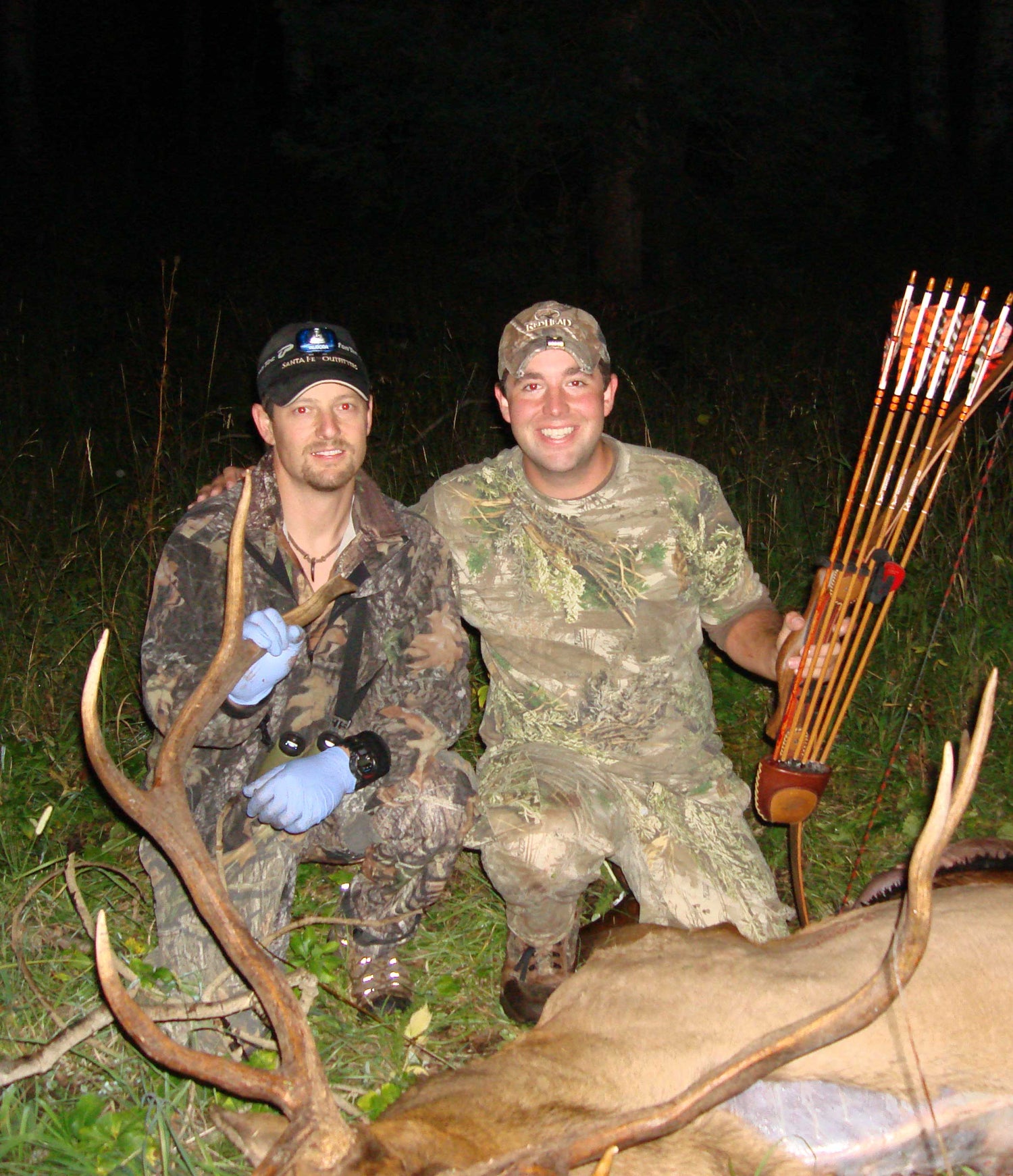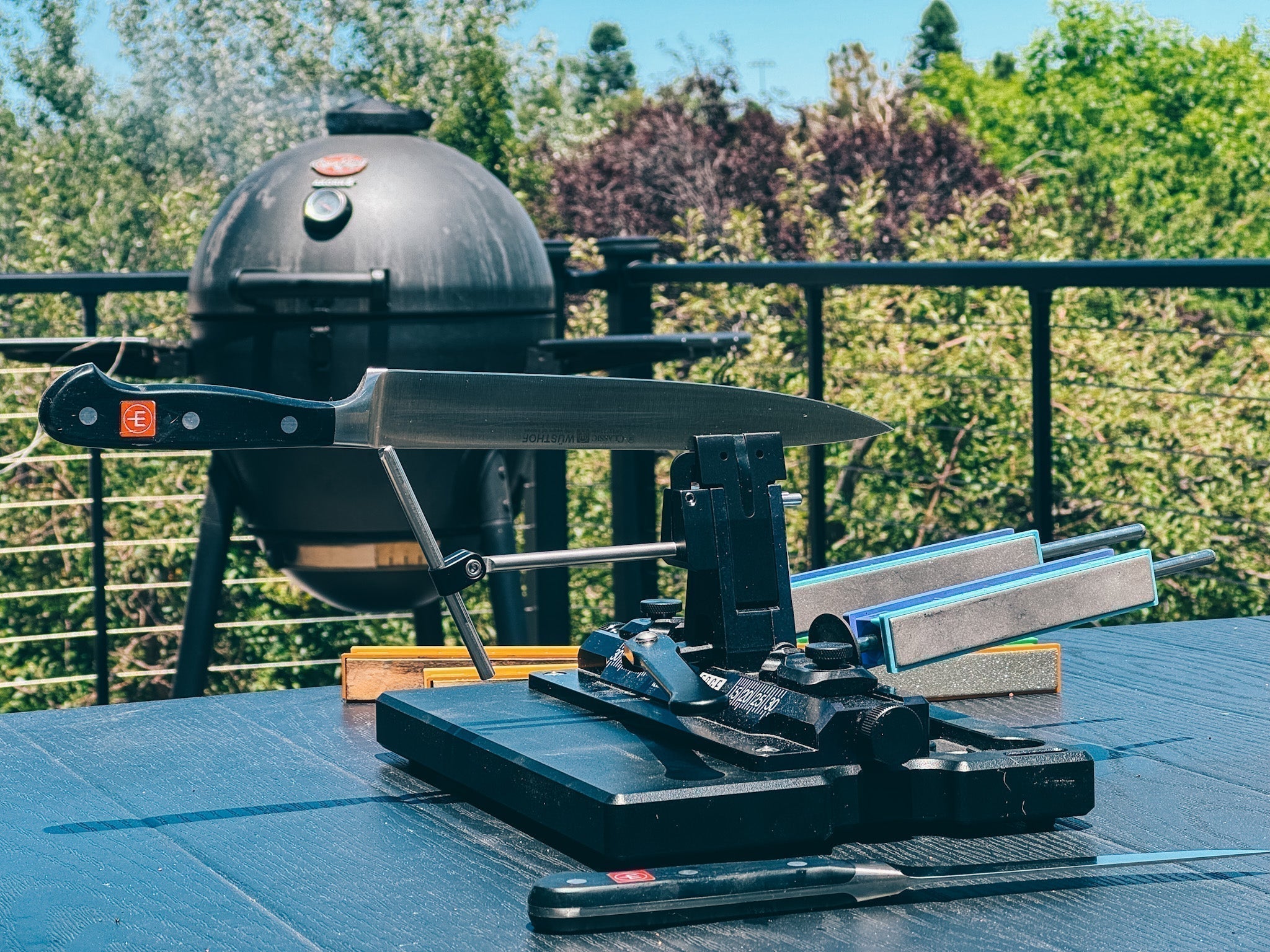How to Sharpen Hunting Knives for the Season: Complete Guide to Prep Your Blades
Proper knife preparation is one of the most critical yet overlooked aspects of hunting preparation. After decades of field dressing experience and processing hundreds of animals during my years as an outfitter, I've learned that the difference between a well-sharpened blade and a mediocre one can make or break your field experience.
The techniques I'll share aren't theoretical—they've been tested and refined through real-world use in challenging conditions. Whether you're preparing for your first hunting season or you're a seasoned hunter looking to optimize your blade performance, understanding the technical fundamentals of hunting knife sharpening will transform how your knives perform in the field.
The Science Behind Hunting Knife Angles
Why 20 Degrees is Optimal
For hunting applications, a 20-degree angle per side strikes the perfect balance between sharpness and durability. This angle provides more than sufficient cutting performance for all hunting tasks while maintaining the structural integrity needed to withstand the demanding conditions of field dressing.
Field dressing subjects blades to unique stresses. Hair and dirt act as abrasives that can quickly dull a knife, while the quartering process requires working around and against bones—conditions that can chip or roll edges that are too acute. A 20-degree angle creates an edge geometry robust enough to handle these challenges without sacrificing cutting efficiency.
Steeper angles (15 degrees or less) may seem appealing for their initial sharpness, but they compromise durability. In hunting scenarios, you need a blade that will maintain its performance throughout the entire field dressing process, not one that starts sharp but fails when you need it most.
Edge Finish: The 1000 Grit Sweet Spot
Achieving the Right Balance
The finish applied to your hunting knife edge is just as important as the angle. A 1000-grit stone finish provides the optimal combination of cutting aggression and refinement for hunting applications.
This grit level creates a controlled tooth pattern that aggressively cuts through hide and meat without tearing tissue. Finer finishes, while mirror-bright, can actually glide over tough hide rather than biting into it. Coarser finishes, though aggressive, tend to tear rather than cut cleanly.
The 1000-grit finish also serves as the ideal foundation for the stropping process that follows.
The Stropping Advantage
Creating Micro-Convex Geometry
After achieving the proper angle and finish with stones, stropping with 2-5 micron compounds transforms a good edge into an exceptional one. This process accomplishes two critical improvements:
Edge Refinement: The stropping process removes the microscopic burr left by stone sharpening while further polishing the edge to reduce cutting resistance.
Micro-Convex Geometry: Unlike stones that create flat bevels, stropping naturally creates a subtle convex curve at the very edge of the blade. This geometry significantly improves edge retention by distributing cutting forces more evenly across the blade structure.
The result is an edge that not only starts sharper but maintains its performance longer under field conditions.
Real-World Performance
What to Expect
A hunting knife sharpened to 20 degrees, finished at 1000 grit, and properly stropped will maintain cutting performance through multiple animals. In my experience, this edge preparation allows for field dressing four or more deer-sized animals before requiring touch-up work.
The key indicators of a properly prepared hunting knife include:
- Effortless hide penetration without requiring excessive pressure
- Clean separation of hide from meat without tearing either
- Maintained performance when working around bones and joints
- Consistent cutting throughout the entire field dressing process
Field Maintenance
Extending Edge Life
Even the best-prepared edge will eventually require attention in the field. The same principles that apply to initial sharpening apply to maintenance: maintain your established angle and use appropriate finishing techniques.
Portable sharpening systems that can replicate your 20-degree angle are invaluable for field touch-ups. Quick stropping can often restore performance without the need for stone work, making it an efficient way to maintain your edge during extended hunting trips.
The Development Story
From Frustration to Innovation
My journey to understanding these sharpening principles began with the same frustrations many hunters face. I started with basic whetstones, moved to electric sharpeners for speed, and then discovered guided sharpening systems that promised consistency.
While guided systems like the Gatco offered superior results compared to electric sharpeners, they presented their own challenges. Inconsistent touch-ups, safety concerns from having to flip the entire system, and the need to count strokes to maintain even bevels made the process more complex than necessary.
These real-world problems, experienced during countless hours of blade preparation for hunting seasons, drove the development of the Wicked Edge system. The goal was to maintain the precision of guided sharpening while eliminating the safety hazards and inconsistencies that plagued existing designs.
Conclusion
Proper hunting knife preparation isn't about achieving the sharpest possible edge—it's about creating the most effective edge for your specific application. The 20-degree angle combined with a 1000-grit finish and proper stropping creates a blade that will serve you reliably throughout your hunting season.
These techniques have been proven through decades of field use and hundreds of animals processed under real hunting conditions. Whether you're using a basic guided system or a precision sharpener, understanding these fundamental principles will help you achieve professional-level results.
The investment in proper knife preparation pays dividends in the field, where a well-prepared blade can make the difference between efficient processing and a frustrating experience. Take the time to prepare your knives properly, and they'll serve you when it matters most.



